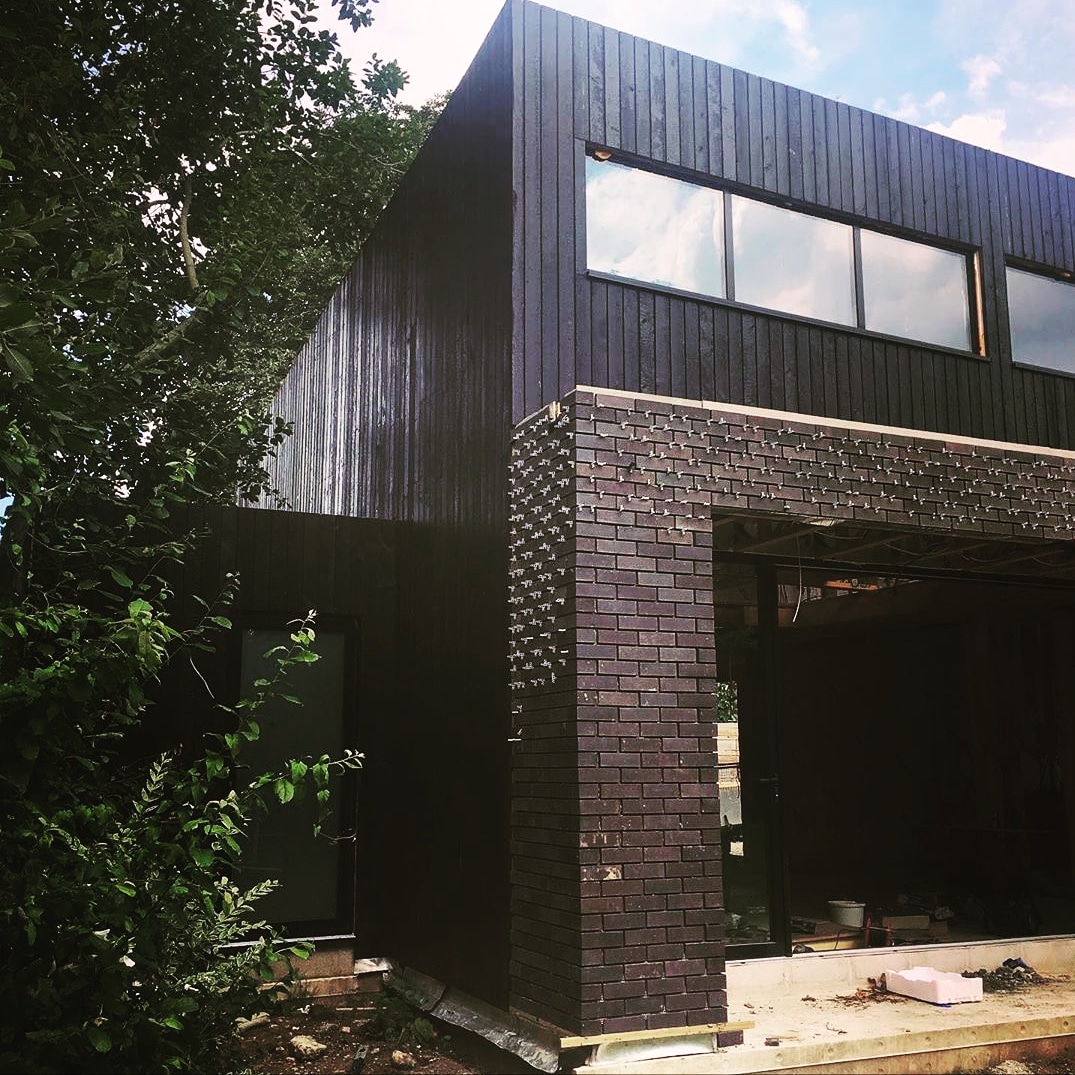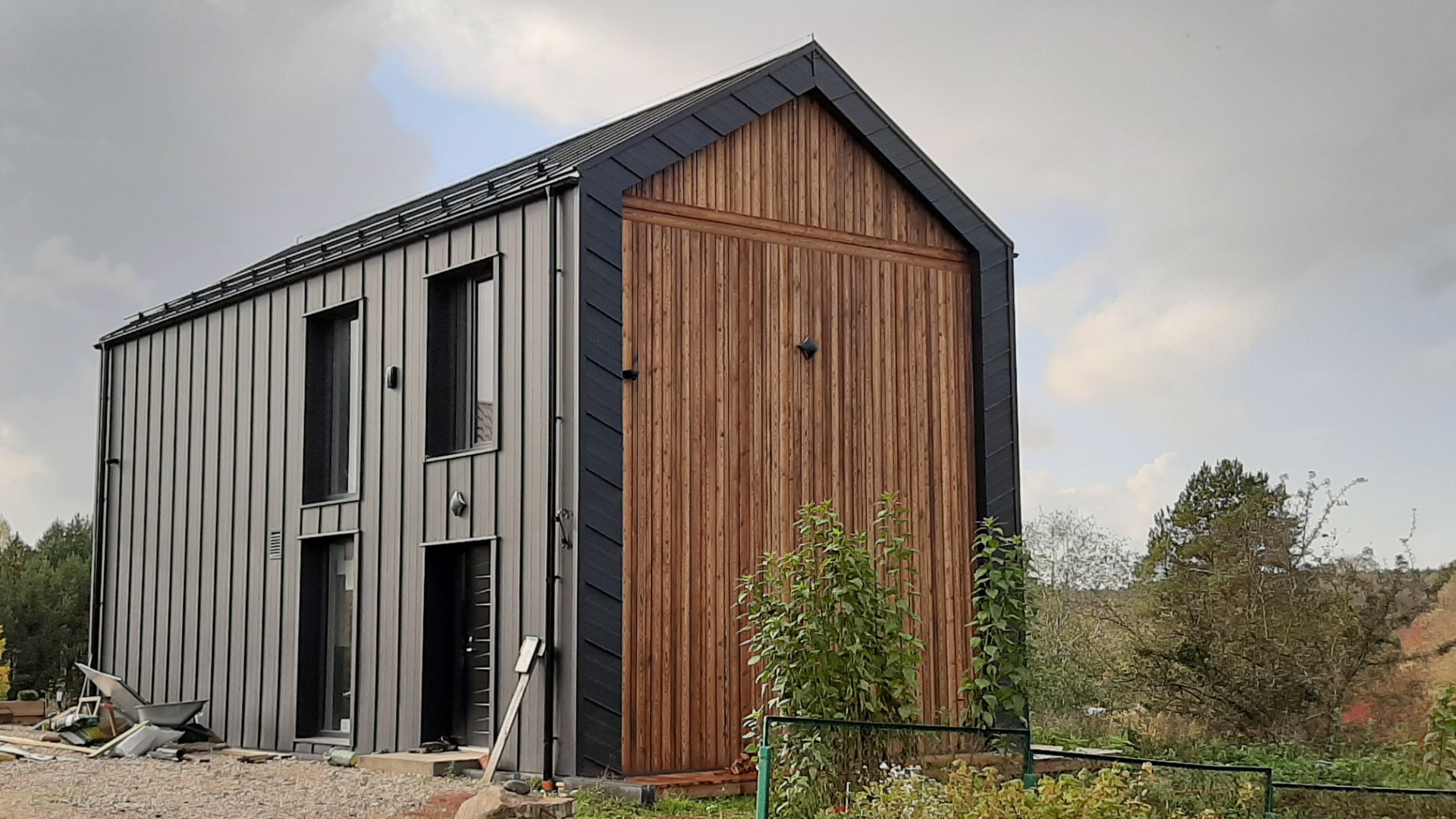House Cladding – How Much Does It Cost?
When deciding on the type of cladding for a home, there are several considerations involved, such as visual appeal, the material’s robustness, and maintenance requirements. One factor that can be surprisingly limiting is cost. Home cladding, also called siding, can actually vary widely in price and can be a barrier to choice if not factored into a home budget.

This article will examine the main options for home cladding, and the average prices for each. With this information on hand, the dreams of perfect siding will not be stopped by sticker shock.
If you’re interested in Shou Sugi Ban cladding – feel free to visit our charred wood projects gallery or contact us to get a custom cost offer.
How Much Does House Cladding Cost?
As mentioned, the cost of home siding doesn’t get much attention in the planning stages. People typically focus on the visual style and material strength, confronting the costs afterward. While this method may work for some, understanding the average cost of house cladding right from the start will save time and help guard against inflated prices. Below is a rundown of some common house siding options for consideration.
A note of caution: it’s essential to keep in mind that the prices listed below are for a basic home. This means a simple cube-style with no intricate architecture that needs to be dealt with. If a home has extra curvature or a more exotic style, the prices for siding will likely increase.
Another factor to consider is the cost of removing any current siding that may already be present. The price to strip away the existing siding in a safe manner that is non-destructive to the home itself varies based on the contractor. Nevertheless, if the home already has pre-existing cladding, this cost must be included when considering new siding installation.
With these caveats out of the way, here is a list of the best house siding materials and their average costs. All prices are based on a per-square-meter basis at the time of this writing.
Vinyl
Average price: $56.51 / £46.71 / €52,20 per square meter.
Vinyl siding is one of the most common siding types. It is made of PVC plastic, making it lightweight and relatively durable, with some notable exceptions. In hot climates, vinyl can warp and even melt! In cold climates, it is often subject to cracking and peeling. This generally means that while vinyl cladding is relatively inexpensive to obtain, it is offset by the maintenance and upkeep costs.
Additionally, another significant drawback of vinyl siding is its dull appearance. Those who want to improve the look will often paint vinyl to make it look like another type of material (such as wood or stone). This also adds to the costs, and the results can vary greatly.
Stone
Average price: $398.26 / £329.05 / €368.02 per square meter.
Stone siding indeed has a unique look. It’s also true that stone siding is one of the most expensive materials. With a price three times higher than vinyl siding on average, the cost of cladding a house with stone can add up very quickly. While stone is generally very resilient and provides good insulation, the price makes it above the budget of most people.
Another factor regarding stone siding is its weight. Stone is significantly heavier than any other siding material. This can impact price indirectly through the cost of handling and installing. Depending on the type and size of the home, and the weight of the stones, a reinforcement of the house’s foundation may be required.
Brick
Average price: $174.91 / £144.56 / €161,67 per square meter.
Brick siding is difficult to put a price on because, unlike the other cladding options on this list, extra materials are required. Besides the brick itself, mortar is necessary to create a solid seal and fill in the gaps. The mortar and the mason can cost extra depending on the contractor. All of this needs to be factored into the final price.
In addition, be prepared for longer installation times. Bricklaying, even for siding, can take several weeks or even months, depending upon the size of the home.
As with stone siding, the same caution about weight also applies to bricks. Cladding a house with brick is a heavy job, and the home’s foundation may not be able to support the weight of the finished siding. A professional will need to inspect the home in these cases.
Charred Wood (Shou Sugi Ban)
Average price: Varies

Shou Sugi Ban, otherwise known as charred wood or Yakisugi, is the traditional art of Japanese wood strengthening and preservation. During the process, the wood is expertly charred, brushed, and treated with oil by a master craftsman. This results in wood that is unbelievably strong and able to resist the weather and elements extremely well.
The wood remains lightweight and easy to handle, reducing the cost of transport and the pressure on the foundation. The typical lifespan of Shou Sugi Ban cladding is 100 years! The benefits don’t end with strength, however. Charred wood also has a beautiful appearance, demonstrating the rich history and elegance of Japanese tradition and culture. The effect is often so visually appealing that most charred wood goes unpainted by choice.
Degmeda is the recognized leader in the Japanese art of Shou Sugi Ban, offering a variety of siding solutions to accommodate any home. With a wide selection of Accoya, larch, spruce, and pine, Degmeda has the quality, material, and expertise to clad any home with elegance and style. Get a quote and find the best Shou Sugi Ban cladding price here. Aside from siding options, Degmeda offers flooring, fencing, and decking solutions.
Conclusion
The best option for house cladding is a combination of style, integrity, and price. While there are many options available, only one fulfills every requirement. Contact Degmeda today for more information about the many advantages of Shou Sugi Ban.